|
It’s been years since I logged a dive on line. It’s not for a lack of diving but the time it takes to write stuff up, prepare any images and update the site. I have a sequence of dives to complete testing of the Amigo and I haven’t posted a single dive from around Wellington. About time I started! Here is the first.
Greta Point, Evans Bay, Wellington Harbour on 23 Feb 17
It’s been a while since I’ve been diving so this dive was primarily a skills refresher while also checking out sites for the last of my Amigo field trials.
While the Amigo is designed for use in near zero visibility in obstructed terrain these conditions aren’t ideal for measuring distance and directionality performance. These measurements are made by repeated traverses of a 100 m line at various receiver and transmitter orientations. The site needs to have good visibility, be clear of large local obstructions, and have a depth of between 12 and 15 m. Other aspects of performance such as echoes from reef walls require additional tests at appropriate dive sites.
I also have a new Go-Pro with Super Suit purchased specifically for the Amigo trials, but also for general underwater photography. I want to see how well this performs.
I still like to plan my dive and dive my plan, particularly when diving solo. Note that I carry a fully independent emergency air supply and dual instrumentation on solo dives. These are always conservative dives with 50 Bar at the surface and RDP no decompression with a gentle assent within open water dive limits and in relatively benign dive conditions. The dive plan fits on just two sides of single piece of paper and it only takes a few moments to adjust the last one. Preparing it helps me optimize my time under water. I email a copy to my emergency contact with instructions on when I will call after the dive, and what to do if I don’t.

Figure 1. Dive Plan
Notes on diving solo. There are several reasons why my trials are solo dives. The first is that is that for most folk my Amigo field trials would make for incredibly boring diving at 15 m over a sandy bottom traversing a string line. The second is that that while they might be watching me, I am fully tasked with my measurements and checking my dive instruments so I’m going to struggle to watch my buddy. The measurement sequence is swim 10 m, orientate, take measurements, record measurements, check instrumentation and repeat. At 100 m traverse back down the string line, change the transmitter orientation and repeat. Solo diving can be carried out safely with appropriate equipment (auxiliary air supply and instrumentation) in relatively benign conditions and well within the limitations of experience and no decompression diving.
I’ve done a reasonable amount of medium to long distance swimming in this area. It is quite well sheltered from a West to northwest wind in close to shore but anything from the North or South means rough going at the surface. Occasionally Evans Bay it is visited by Orca and seals.
Even though my gear is regularly serviced and was checked just two days ago I found that one of the fin straps had broken when kitting up. Hey, I have a range of useful spares including a spare mask and strap, a spare fin strap, snorkel, O rings, a fin strap, a few tools, some tape, cable ties and cordage. Wrong! Looks like I had I have given the fin strap away some time back and not replaced it. Thankfully the break was at the clip and the remaining strap was long enough to make the fin serviceable without reverting to cable ties or tape.
While I was kitting up I was surprised that the local constabulary pulled up and asked what I was planning. I explained the dive plan and they headed off – but nice of them to show an interest.
This was the first time this summer that Wellington has had three consecutive fine days without torrential rain or howling wind. The Met was a 28 kmph northerly with an air temperature of 21°C. There was a mild chop out to about 100 m from shore where it increased to moderate.
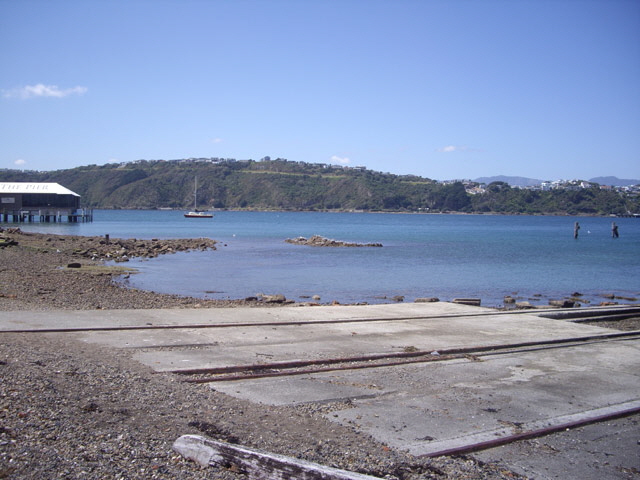
Figure 2. Patent Slip Dive Entry
Weighted at 10.5 kg I set off at 2 pm. Visibility in the shallows was around 6 m but below 5 m depth this dropped rapidly to about 1 m due to algae and stirred up sediment. The bottom was essentially empty cockle shells and a few large horse muscles embedded in fine sediment, with the occasional sponge, sea cucumber and quite a few star fish. I had heard that there was a scallop bed in the area. I found plenty of empty scallop shells but not a single live scallop. The water temperature was 16°C.
What horrified me was the amount of rubbish on the bottom.
Glass and plastic bottles, cans, car tyres, pieces of pipe, fishing reel filament spools (I stopped counting these after ten), large pieces of iron and steel (but no anchors), crockery, and I even a leather kit bag! This has got to be the most littered dive site that I have ever encountered. The litter is not from divers or in-wash, but from boaties. Shame on you for throwing this stuff into our ocean!
There were also a few large fallen wharf piles at less than 10 m deep.
Dive HQ Petone have adopted this site for the PADI Project Aware clean up program. I’ll be volunteering to assist with their next clean up dive. On reflection there wasn’t too much new rubbish other than a few dozen aluminium cans. Maybe Dive HQ are leaving stuff that has been colonized by marine critters?
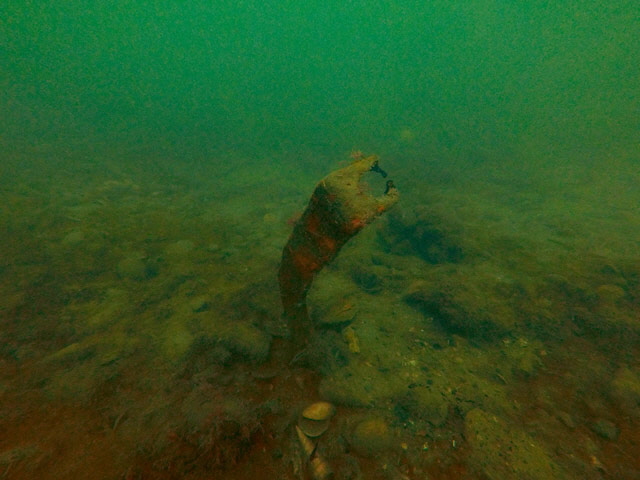
Figure 3. Piece of Iron Slowly Corroding

Figure 4. Car Tyre (probably from a boat fender)

Figure 5. Coffee Over-board! I figure found the rest of the dinner set too.
The fine silt is a consequence of the sediments from the Hutt river. While this makes for pretty unpleasant diving it is natural. If the bottom is disturbed then the visibility drops rapidly to zero. I spent a lot of time looking at my instrumentation and staying less than 1 m above the bottom taking care not to kick up a dust cloud.
The first sign of fish were bullies and small spotties in the shallows but with increasing depth their numbers dropped away. For much of the dive the there seemed to be nothing other than me swimming in the water.
I did not complete a number of the dive skills because of the silt. Deliberately removing kit in these conditions is a recipe for loosing it.
On the deep leg (at ~ 13 m) the light level really dropped off and there were less sea shells and rubbish. Just muddy silt with the occasional small sponge and invertebrate mounds.
On the return leg I stopped by one of the fallen piles for a while, waited and watched. Suddenly a few large parore appeared darting quite close and a school of tarakihi cruised past. There were a couple of small leather jackets and a few spotties.
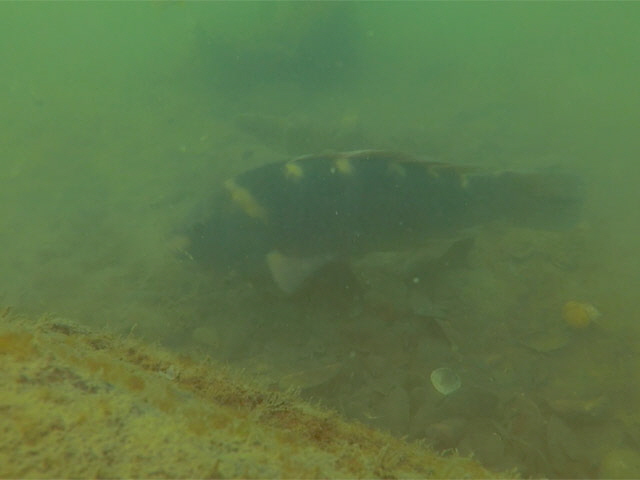
Figure 6. Parore
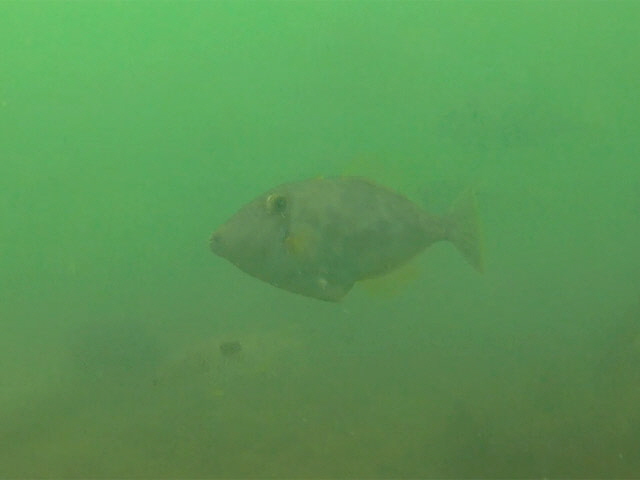
Figure 7. Leather Jacket
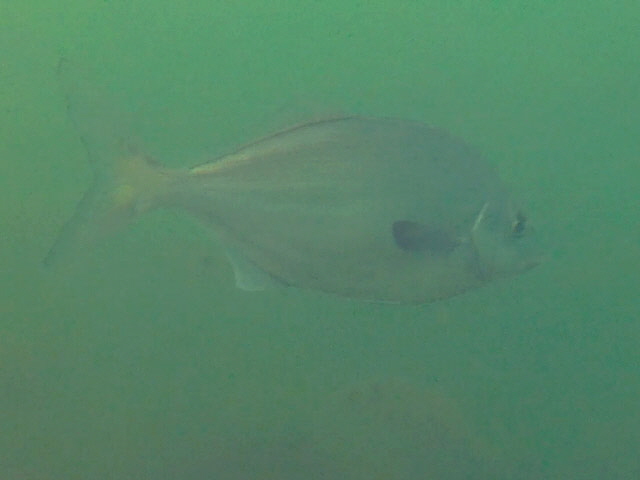
Figure 8. Terakihi
I completed the dive on one hour and surfaced from 3m about 50 m northwest of the planned exit point at 3 pm. I dropped back down and cruised back to the entry point. My dive navigation was pretty good given the complete lack of underwater references and the poor visibility and the error was consistent with the tide turn at 2:20 pm.
The camera worked well for photos and movies although pressing the buttons, which are quite small, was a challenge with Kevlar gloves. The images are not much chop due to the limited visibility and low light. I’ll be processing these to see if I can turn what looks like pea soup into something that resembles the vista.
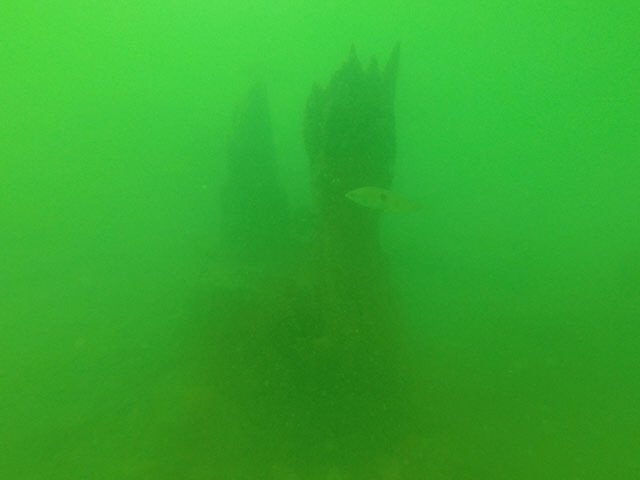
Figure 9. Original Shot of Pile

Figure 10. Shot of Pile with Adjusted Colour Balance, Contrast and Brightness
(Spotty in fore-ground)
There are a few gear refinements that I want to make following this dive starting with moving my alternative air supply to somewhere slightly easier to access and improving the camera stowage so the tether line doesn’t tangle with the BCD inflation hose.
This site won’t be any good for the Amigo field tests where I traverse a string line taking signal measurements at different orientations and depths. I need to be able to see the string line and the bottom. I’ll be looking for a better site, perhaps along the southern coast in the Taputeranga Marine Reserve. This should be well sheltered from Wellington’s predominantly nor-west wind and pretty much free from silt.
|